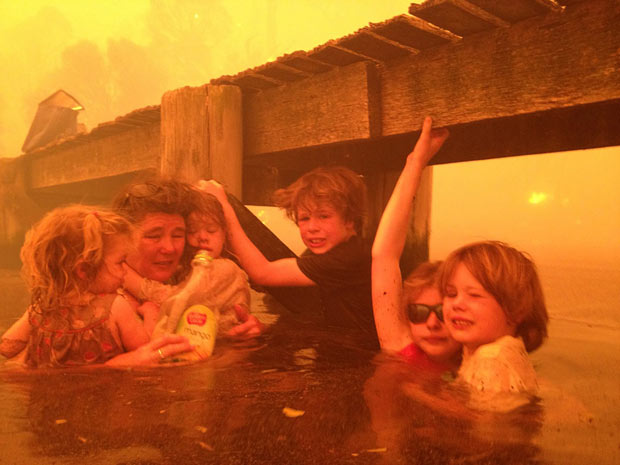
Over at the Guardian’s art and culture blog Jonathan Jones argues that photography has now become our de facto medium for contemporary artistic expression. Some may argue that the creative process underlying photography comes up short when compared with the skills and techniques required to produce some art in more traditional media. However, Jones seems right in one respect: today’s photography captures the drama of the human condition in a way that no other medium can today, it’s not even close. We are in awe of the skills demonstrated by the Old Masters. However, that it took months for Rembrandt to paint a single canvas misses the point. It still takes an eye and empathy and a desire to tell a unique story as the photographer clicks the digital shutter in a five-hundredth of a second.
[div class=attrib]From the Guardian:[end-div]
It has taken me a long time to see this, and you can laugh at me if you like. But here goes.
Photography is the serious art of our time. It also happens to be the most accessible and democratic way of making art that has ever been invented. But first, let’s define photography.
A photograph is an image captured on film, paper or – most commonly now – in digital memory. Photography also includes moving images captured on film or video. Moving or still, we all know a photograph is not a pure record of the visual world: it can be edited and transformed in infinite ways.
Moving or still, and however it is taken, whether by pinhole camera or phone, the photographic image is the successor to the great art of the past. It is in pictures by Don McCullin or films by Martin Scorsese that we see the real old master art of our time. Why? Because photography relishes human life. The greatness of art lies in human insight. What matters most is not the oil paints Rembrandt used, but his compassion. Photography is the quickest, most exact tool ever invented to record our lives and deaths – 17th-century painters would have loved it.
It has taken me a long time to see this, and you can laugh at me if you like. But here goes.
Photography is the serious art of our time. It also happens to be the most accessible and democratic way of making art that has ever been invented. But first, let’s define photography.
A photograph is an image captured on film, paper or – most commonly now – in digital memory. Photography also includes moving images captured on film or video. Moving or still, we all know a photograph is not a pure record of the visual world: it can be edited and transformed in infinite ways.
Moving or still, and however it is taken, whether by pinhole camera or phone, the photographic image is the successor to the great art of the past. It is in pictures by Don McCullin or films by Martin Scorsese that we see the real old master art of our time. Why? Because photography relishes human life. The greatness of art lies in human insight. What matters most is not the oil paints Rembrandt used, but his compassion. Photography is the quickest, most exact tool ever invented to record our lives and deaths – 17th-century painters would have loved it.
Or if David Hockney is right, they did love it. Vermeer almost certainly used a camera obscura to compose his scenes. Hockney believes that Caravaggio and many more artists used a “secret knowledge” of early cameras to perfect their almost hallucinatory understanding of the visual world.
However they did it, they painted the flux and drama of real life. From birth to death, great art is a sequence of moving pictures of the human condition.
Today, photography is the only art that seriously maintains this attention to the stuff that matters. Just look (as the world is looking) at this week’s incredible photographs of a family surviving a wild fire in Tasmania. Here is the human creature, vulnerable and heroic.
[div class=attrib]Read the entire article after the jump.[end-div]
[div class=attrib]Image: Tim Holmes (not pictured) and his wife Tammy (second from left) huddled under a jetty for three hours with their grandchildren while their hometown in Tasmania was destroyed by wildfires. Courtesy of Tim Holmes/AP.[end-div]
